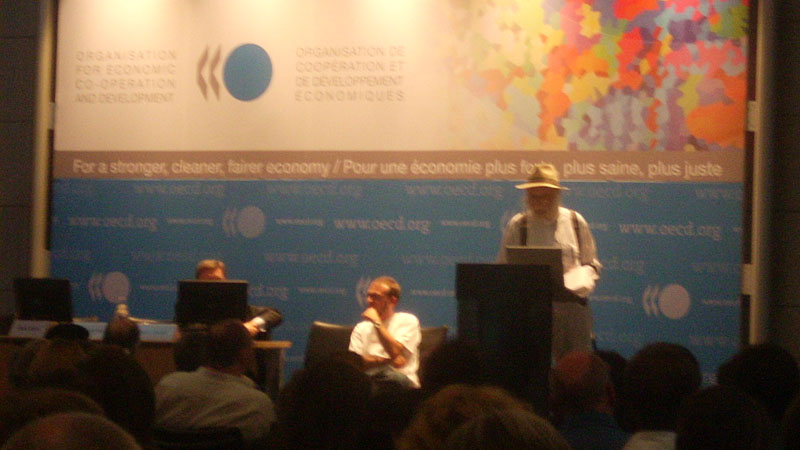
The main focus of DD4D Conference (Data Designed for Decisions) organized by OECD (Organisation for Economic Co-operation and Development) and IIID (International Institute for Information Design) was to understand the process involved in the transformation from data to information and how to present them in order to facilitate the decision-making process. An impressive and variegated amount of ideas, discussions, solutions and, especially, new questions have emerged during this intense 3-days meeting.
Perhaps the most immediate consideration is the increasing relevance of storytelling aspects inside information design discipline. On this point, the main question is probably to figure out who will be the main narrators of these stories and which tools should they use. Are the foundations of Information Design still valid today? Should the statisticians think about a new vision of statistics, focused more on people, rather than on abstract figures? Do statistical data and information empower people?
An amazing collection of visualization tools and methods has been presented. In my personal opinion these are the most interesting talks.
Elizabeth Pastor of Humantific showed her amazing work on how to face the complexity of organizational contexts through the strategic activities of SenseMaking and ChangeMaking, involving the practice of visual and design thinking and the information design techniques. Nic Marks from New Economics Foundation illustrated the National Accounts for Well-Being project, a website where the multidimensional concept of well-being is measured, through both personal and social indicators. Seth Flaxman talked about city quality indicators and presented CityRank.ch, where people can create their personal rankings in order to compare different cities. Mikael Jern from NCVA explained the already famous OECD eXplorer, highlighting some new features, such as the possibility to annotate stories and create Wikipedia pages.
Other speakers pointed out the need of more insight on the effects of visualization techniques, asking for new valuation methods for Information Design. On this point the amazing work conducted by David Sless and his group of benchmark volunteers, all around the world, is particularly remarkable.
An enjoyable show has been engaged by Yuri Engelhardt and Raul Nino Zambrano about the role of animation and rhetoric, through a curious comparison between Hans Rosling and Otto Neurath. The presentation of Professor Kirti K. Trivedi on the concepts of self-evidence and interpretation of data patterns was also really engaging.
Topics like well-being, healthcare, safety, social justice, sustainability (some of the most wicked problems as Robert Horn calls them) have emerged as the next issues on which designers, visualization researchers and statisticians should focus their joint efforts. The concept of trust seems to be one of the main challenges we’ll have to face in the future (a design of trust? ), together with the need to involve people, institutions and governments into the process of fostering knowledge.

